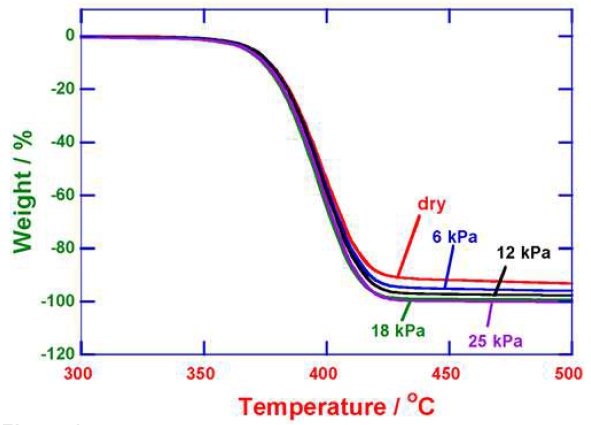Thermal Decomposition of Polyester in Water-vapor Atmosphere
Introduction
When evaluating materials, it is preferable to evaluate at the measurement condition same as in the real environment. It is necessary to evaluate in humidity control atmosphere because not only for kinds of atmosphere gas, but also for the effect of humidity which can be not negligible when the material is used in real environment of high-temperature and humidity. Thermal analysis can be performed in a controlled water-vapor atmosphere by using the humidity generator (HUM-1). In the present work, we study the thermal decomposition of polyester in humidity atmosphere.
Instrument
TG-DTA was performed using a Thermo plus TG8121 system connected to humidity generator, HUM-1. It enables to the user to perform heating under a constant relative humidity.
Measurement and analysis
Thermal decomposition of PBT is measured using TG in changing water-vapor concentration. As the water-vapor concentration is increasing, the decomposition shifts to low temperature and the mass loss is increasing. Thus, thermal decomposition of PBT such as polyester depends on surrounding of the water-vapor concentration.
In addition, when TG-MS is performed in a high concentration of water-vapor, the evolved gases of terephthalic acid and butylene glycol are confirmed due to thermal decomposition, suggesting the sample undergoes hydrolysis. It suggests that PBT inhibits carbon due to hydrolysis at high concentration of water vapor, thus, the amount of residue decreases.

Figure 1: Thermal decomposition of PBT

Contact Us
Whether you're interested in getting a quote, want a demo, need technical support, or simply have a question, we're here to help.
